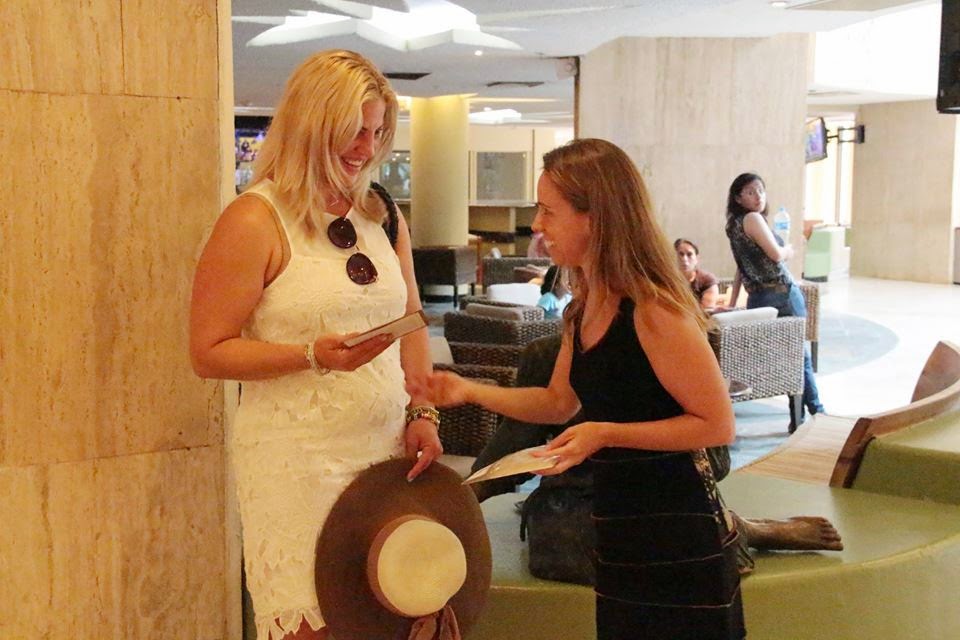
Entrevistas / Interviews
Souvenir (obra artística)
Souvenir (artwork)
Acción 02.04.2015
Hotel Grand Hotel. Acapulco. Zona Dorada.
Action 02.04.2015
Hotel Grand Hotel. Acapulco. The Golden Zone.
Exposición del proyecto: SOUVENIR
L'Almodí. Valencia. 08.07.2016
Exhibition of the project: SOUVENIR
L'Almodí. Valencia. 08.07.2016
Instalación. Fotografía, códigos QR y huella digital.
Souvenir
Installation. Photography, QR codes and digital footprint.
Souvenir
Installation. Photography, QR codes and digital footprint.
El proyecto Souvenir pretende encerrar aspectos directamente relacionados con los lugares turísticos en los que ponen en evidencia la exagerada explotación urbanística, reflejo del modus vivendi del hombre contemporáneo y su sociedad.
Souvenir (del francés souvenir, recuerdo, objeto que sirve como recuerdo de la visita a un lugar), es un objeto que atesora a las memorias que están relacionadas a él.
Durante el proyecto se desarrollaron un conjunto de veinticuatro entrevistas para la recuperación de un amplio conjunto de historias personales, vinculadas con la geografía e historia de Acapulco (Acapulco Tradicional). Paralelamente, recogí souvenir naturales del lugar e integré los textos recopilados en etiquetas que posteriormente formaron parte del souvenir y que regalé a los turistas, mediante una acción en el hotel Gran Hotel de la zona Dorada.
Las pequeñas inscripciones que acompañan a los souvenirs, los conceptos a que hacen referencia, hablan de la comunidad, experiencia vivida en esos lugares al tiempo que sirven de referencia para conocer aspectos del espacio que representan en un momento y un lugar puntual y también para indicar que su valor es de índole sentimental más que práctico. (Arte Comunitario Colaborativo).
Los recuerdos, las vivencias y la memoria personal, en el momento en el que se comparten, contribuyen a la construcción de un imaginario común.
La particularidad y la historia de los pueblos tienen mucho que ver con el entorno geográfico que los envuelve. Acapulco no es una excepción y resulta evidente que su topografía ha determinado su historia. El mar y la montaña, visitar las estructuras militares próximas a la costa o las torres vigía de la montaña para acercarnos a la geografía particular de Acapulco y al desarrollo de la misma por parte de sus habitantes a lo largo de la historia.
El proyecto quiere hacer reflexionar al espectador-turista sobre la licitación de nuestra manera de habitar el entorno que nos rodea, y la posibilidad de encontrar otras vías más equilibradas y armónicas con el entorno y sus gentes.
El viajero-turista asociará dicho souvenir a las vacaciones y recordará ese momento especial cada vez que mire el objeto (la obra).
The Souvenir project aims to contain aspects directly related to tourist sites in those that show the exaggerated urban exploitation, reflection of the modus vivendi of contemporary man and his society.
Souvenir (from the French souvenir, keepsake, object that serves as a memory of the visit to a place), is an object that holds the memories that are related to it.
During the project a set of twenty-four interviews were carried out for the recovery of a wide range of personal stories, linked to the geography and history of Acapulco (Acapulco Tradicional). In parallel, I gathered souvenirs that were native to the place and integrated the texts compiled in labels that subsequently formed part of the souvenir and that I gave to the tourists, via an activity in the Gran Hotel in the Dorada area.
The small inscriptions that accompany the souvenirs, the concepts that they refer to, speak of the community, experience lived in those places at the same time as they serve as reference to know aspects of the space that appear to be in a moment and a precise place and also to indicate that its value is more of a sentimental kind than practical. (Arte Comunitario Colaborativo[1]).
The recollections, the experiences and the personal memory, in the moment in which they are shared,[2] contribute to the construction of a common imagination.
The distinctiveness and the history of towns have[3] much to do with the geographical environment that surrounds them. Acapulco is no exception and it seems evident that its topography has determined its history. The sea and the mountain, to visit the military structures near the coast or the watchtowers of the mountain to get close to the particular geography of Acapulco and to its development on the part of its inhabitants throughout history.
The project aims to make the spectator-tourist reflect on the negotiation of our way of living in the environment that surrounds us, and the possibility of finding other avenues that are more balanced and harmonious with the environment and its peoples.
The traveller-tourist will associate said souvenir with the holidays and will remember that special moment each time that they look at the object (the work).
[1] "Collaborative Community Art."
[2] I lose the alliteration Planells employs with the four words starting
with "c" in this sentence when I translate the verb 'compartir' to
the verb 'share.'
[3] In contrast to the previous footnote, here the register is preserved. I
consider that the text would be easier to read if "have" were
translated as "has." "Has" in the TT would change the
meaning of the text, as "particularity" and "history" would
no longer carry out the action of the verb. These two options show an attempt
to balance between Nida's literal and paraphrastic translation approaches, in
this case to preserve the meaning of the ST.





















